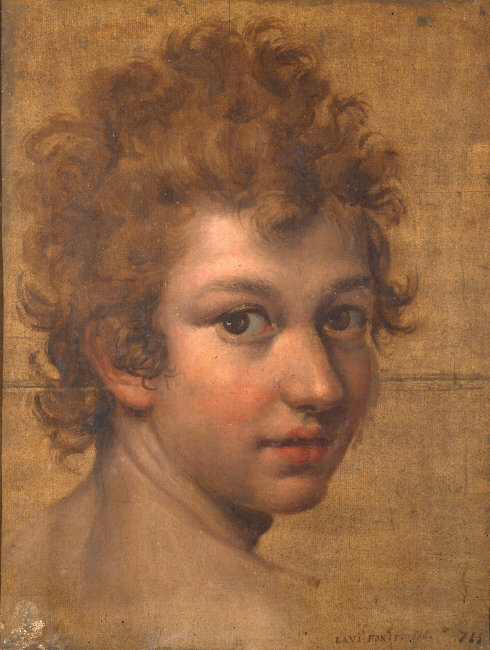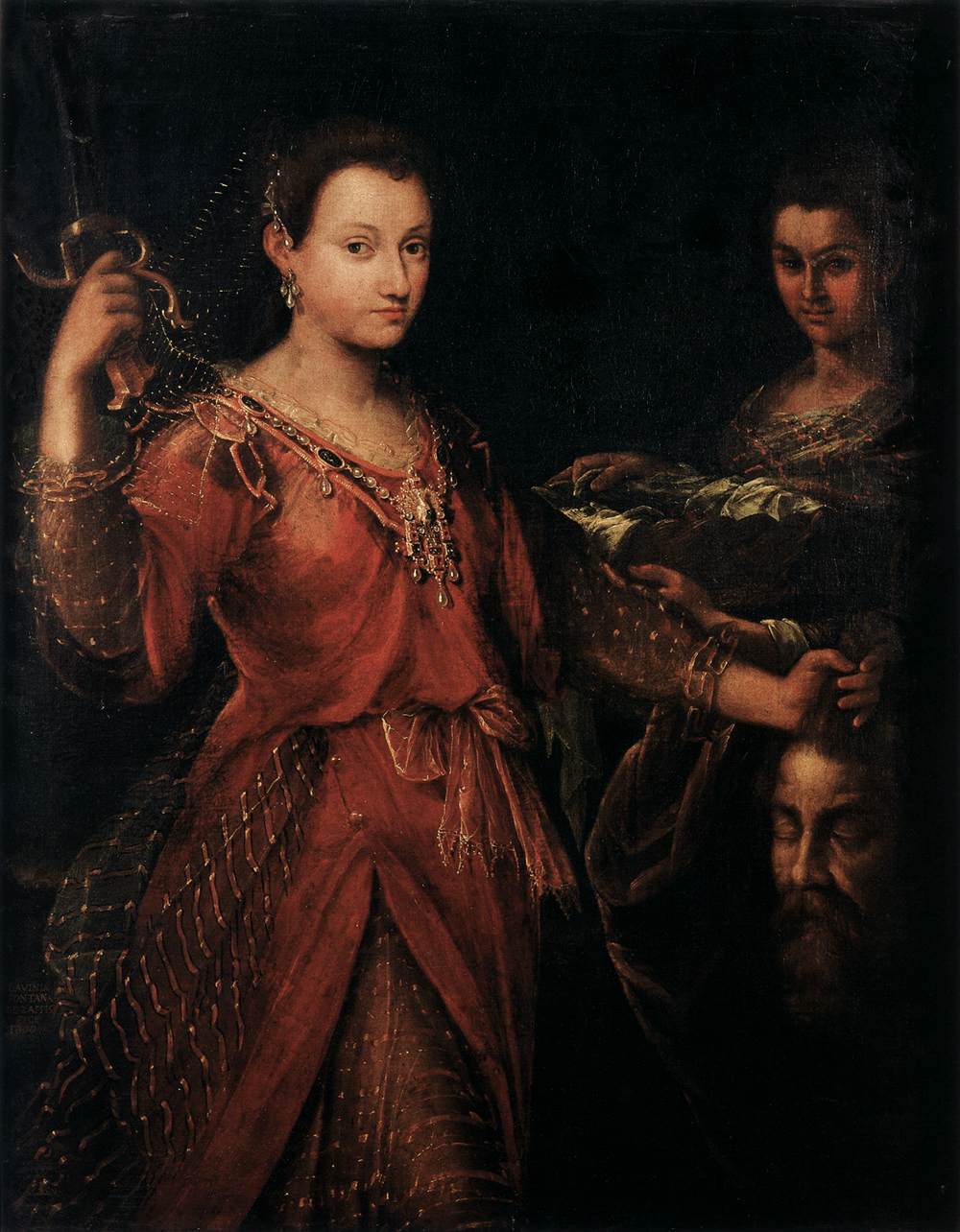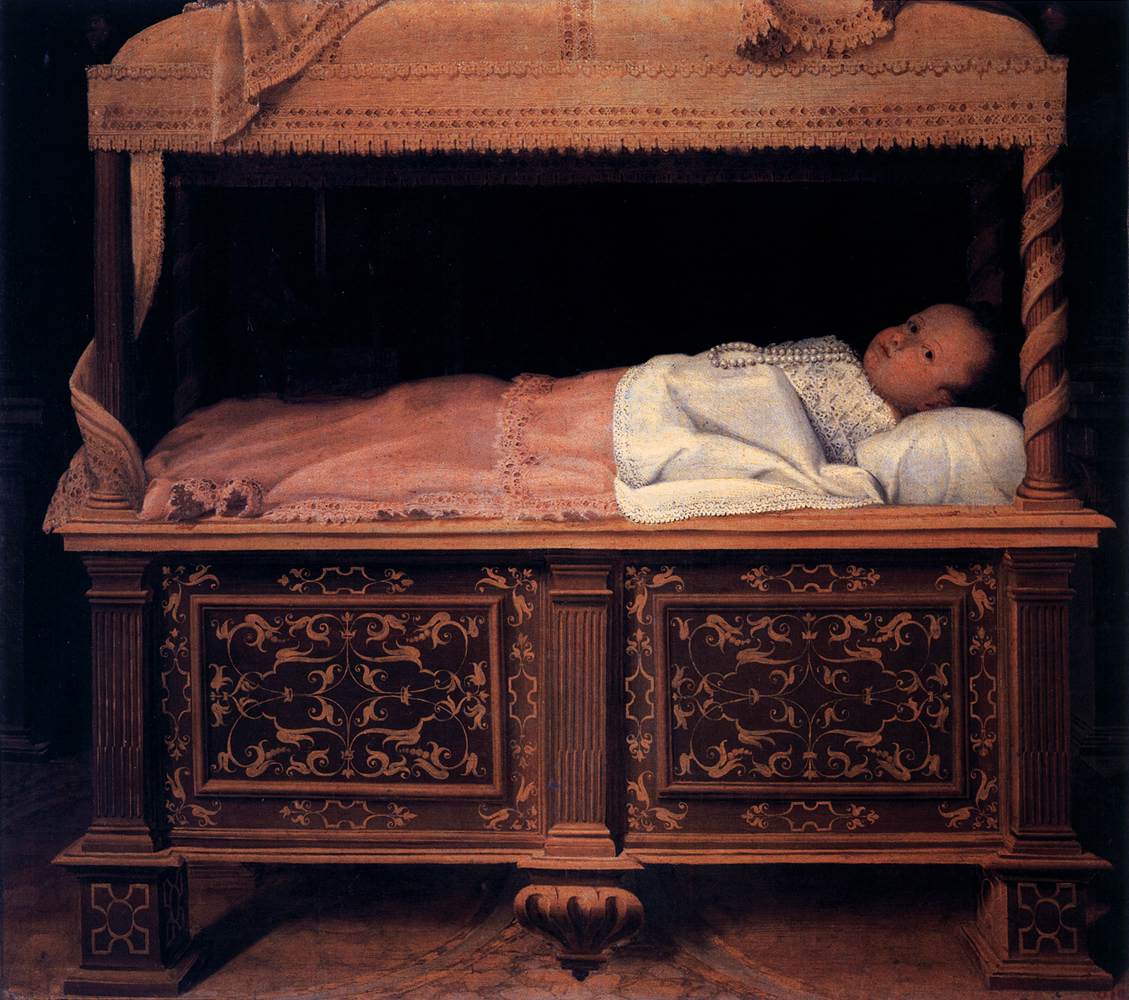By Anne Leader
Lavinia Fontana was baptized on 24 August 1552 in Bologna. Women were typically excluded from artistic training in the Renaissance, but Lavinia was able to learn from her father, the Bolognese Mannerist Prospero Fontana (d. 1597). She began her career in Bologna painting small devotional works and portraits. She also painted history paintings, like her acclaimed Noli me tangere, now in the Uffizi. She ended her career in Rome, where she received important commissions to provide altar decorations for the churches of S. Paolo fuori le mura and S. Maria della Pace. Lavinia has the largest oeuvre of any woman prior to 1700, an accomplishment even more impressive considering she had eleven children.
In addition to self-portraits, Lavinia was asked to paint the portraits of noble men, women, and children. Among the most notable are two portraits of the young Antonietta Gonzalez, daughter of Pedro Gonzalez (the so-called “hairy man from Munich,” although born in the Canary Islands). Gonzalez and his offspring are believed to be the first documented cases of Ambras Syndrome, which causes hair to grow on the face and body after birth. They were famous within noble circles as natural wonders, considered to be more animal than human. While cruel and unusual by today’s standards, the treatment of the Gonzalez family as gifts for royals allowed them to have some prestige and material comforts rather than being shunned and isolated.
Reference: “Fontana (ii): (2) Lavinia Fontana.” Grove Art Online. Oxford Art Online. Oxford University Press.
Further reading: Lavinia Fontana: A Painter and Her Patrons in Sixteenth-century Bologna by Caroline P. Murphy (2003); and Invisible Women. Forgotten Artists of Florence (English and Italian Edition) by Jane Fortune (2009).
Self-Portrait in a Studio, 1579, oil on copper, Florence, Galleria degli Uffizi.
Portrait of Ginevra Aldrovandi Hercolani as Widow, ca. 1595, oil on canvas, Baltimore, Walters Art Gallery
Portrait of a Notary, 1583, oil on canvas, Private Collection
Portrait of a Noblewoman, ca. 1580, oil on canvas, Washington, National Museum of Women in the Arts
Head of a Young Man, 1606, oil on canvas, Rome, Galleria Borghese; photo credit: Scala/Art Resource, NY
Judith with the Head of Holofernes, 1600, oil on canvas, Bologna, Museo Davia Bargellini
Noli me tangere (Jesus Appears to Mary Magdalene), 1581, oil on canvas, Florence, Galleria degli Uffizi
Portrait of a Newborn in a Cradle, c. 1583, oil on canvas, Bologna, Pinacoteca Nazionale
Portrait of Antonietta Gonzalez, c. 1595, oil on canvas, Blois, Musée du Château
Portrait of Antonietta Gonzalez, 1594-95, red and black pencil, brown ink on paper, New York: The Morgan Library and Museum










